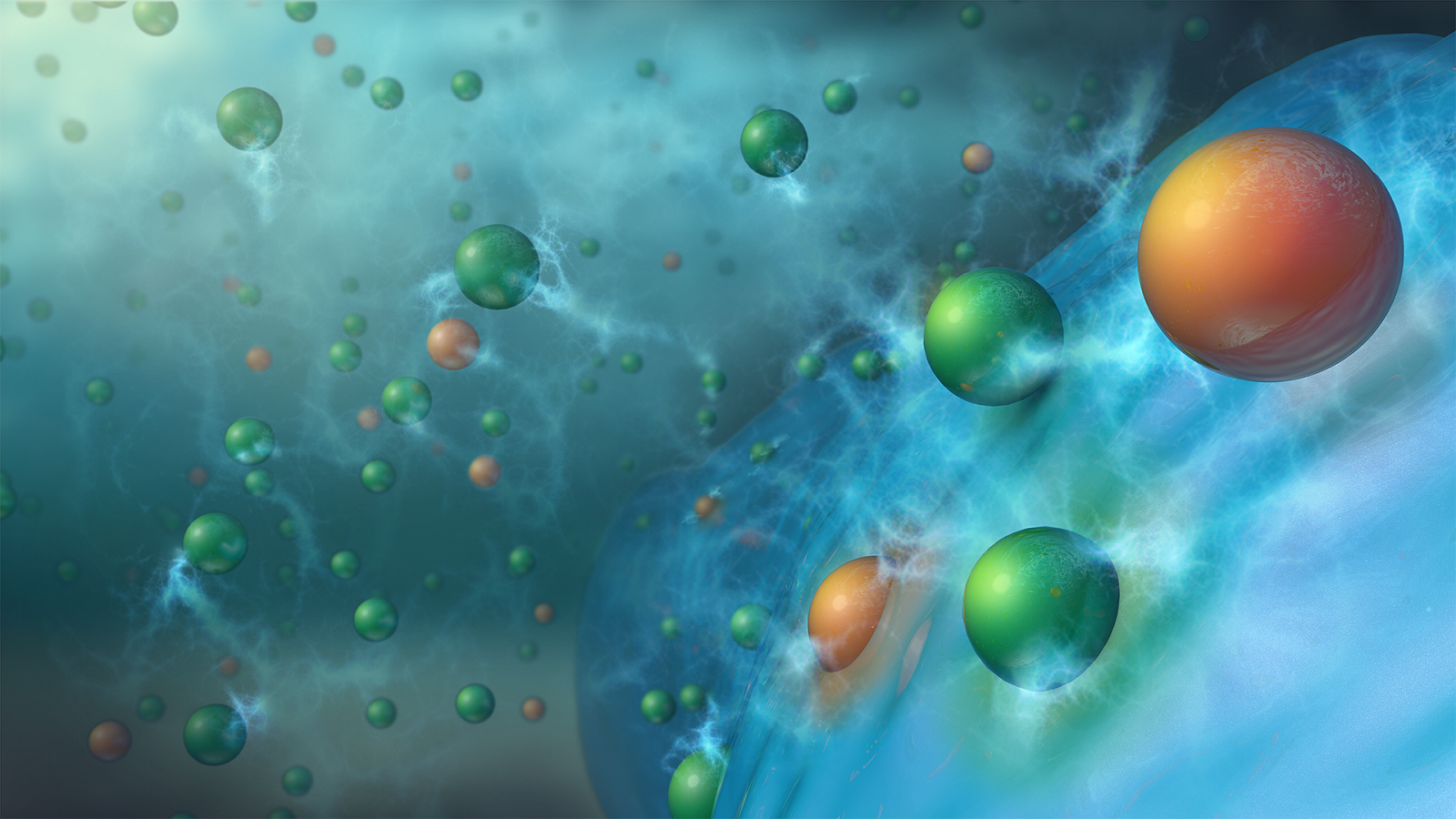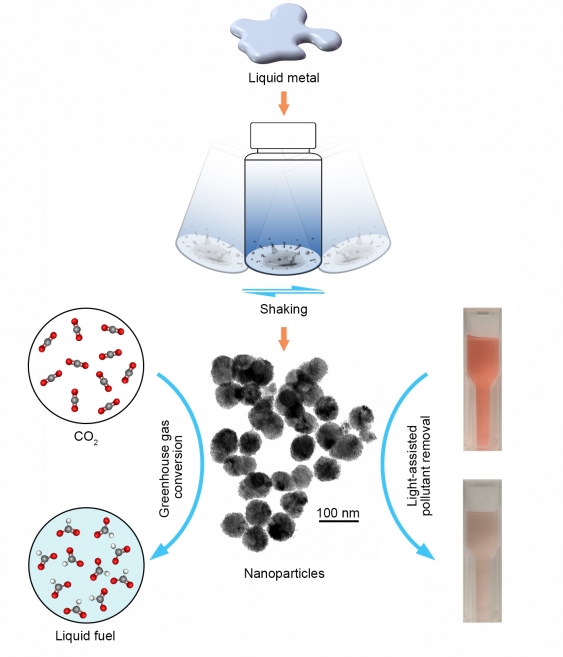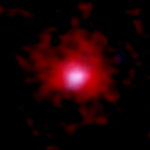(New electrolyte stops rapid performance decline of next-generation lithium battery)
2019/10/9 アメリカ合衆国アルゴンヌ国立研究所(ANL)

・ ANL が、エネルギー貯蔵容量、寿命やコスト、安全性においてより優れた次世代リチウムイオン蓄電池の実現に向けた、新電解質とシンプルな添加物を開発。
・ リチウムイオン蓄電池の性能向上には、現行のグラファイトに比してほぼ 10 倍の膨大な理論エネルギー容量を備えるシリコンを負極として利用することが望まれている。シリコンの低コストも商業的な利点。
・ しかし、シリコンベースの負極では充放電サイクルで電解質との反応性が極めて高くなり、これが蓄電池を経時的に劣化させてサイクル寿命を短縮させる。
・ 現在のリチウムイオン蓄電池の電解質は、リチウム塩に加え最低 1 種類、または 3 種類以上の有機添加物を含有する。今回、Mg2+、Ca2+、Zn2+、または Al3+の二価~三価の金属カチオンを含んだ第二の塩の添加物を開発。これらをまとめて MESA(mixed-salt electrolytes for silicon anodes)(シリコン負極用混合塩電解質)と称する。・ MESA は、シリコン負極の表面・バルクの安定性を向上させて、サイクル寿命とカレンダー寿命を延長させる。シンプル、スケーラブルで既存の蓄電池技術に完全に適合する。・ ANL の Cell Analysis、Modeling and Prototyping (CAMP)施設にて MESA 組成について試験を実施。また、MESA を配合した電解質の動作について調査し、充電時の電解質溶媒に添加した金属カチオンが、リチウムイオンと共にシリコン負極に移動してリチウム-金属-シリコン相を形成。これはリチウムシリコン相よりも安定している。・ この新しい電池化学は、従来電解質を使用した蓄電池で問題となっていたシリコン負極と電解質間の有害な副反応の発生を大幅に低減させる。4 種類の金属塩のうち、Mg2+、または Ca2+のカチオンを添加した電解質の蓄電池が充放電数百サイクル超作動し、最も優れることを確認。エネルギー密度は、グラファイト負極の同様な蓄電池のそれを 50%上回った。・ シリコン負極がグラファイト負極を代替するか、シリコンが負極構成の数%超を占めるようになれば、今回の研究結果が多大な影響を及ぼすと考える・ 本研究には、米国エネルギー効率・再生可能エネルギー局(EERE)の Vehicle Techologies Office が資金を提供した。 URL: https://www.anl.gov/article/new-electrolyte-stops-rapid-performance-decline-ofnextgeneration-lithium-battery (関連情報) ACS Applied Materials & Interfaces 掲載論文(フルテキスト) Using Mixed Salt Electrolytes to Stabilize Silicon Anodes for Lithium-Ion Batteries via in Situ Formation of Li–M–Si Ternaries (M = Mg, Zn, Al, Ca) URL: https://pubs.acs.org/doi/10.1021/acsami.9b07270#
<NEDO海外技術情報より>
Abstract

Replacing traditional graphite anode by Si anode can greatly improve the energy density of lithium-ion batteries. However, the large volume expansion and the formation of highly reactive lithium silicides during charging cause the continuous lithium and electrolyte consumption as well as the fast decay of Si anodes. In this work, by adding 0.1 M M(TFSI)x (M = Mg, Zn, Al and Ca) as a second salt into the electrolyte, we stabilize the anode chemistry through the in situ formation of Li–M–Si ternary phases during the charging process. First, lithium silicides and magnesium lithium silicides were synthesized as model compounds to investigate the influence of metal doping on the reactivity of lithiated Si. Using solid-state nuclear magnetic resonance spectroscopy, we show that Mg doping can dramatically suppress the chemical reactions between the lithium silicide compounds and common electrolyte solvents. New mixed salt electrolytes were prepared containing M(TFSI)x as a second salt to LiPF6 and tested in commercially relevant electrodes, which show higher capacity, superior cyclability, and higher Coulombic efficiencies in both half-cell and full-cell configurations (except for Zn) when compared with standard electrolytes. Post-electrochemistry characterizations demonstrate that adding M salts leads to the co-insertion of M cations along with Li into Si during the lithiation process, stabilizing silicon anions by forming more stable Li–M–Si ternaries, which fundamentally changes the traditional Li–Si binary chemistry while minimally affecting silicon electrochemical profiles and theoretical capacities. This study opens a new and simple way to stabilize silicon anodes to enable widespread application of Si anodes for lithium-ion batteries.



